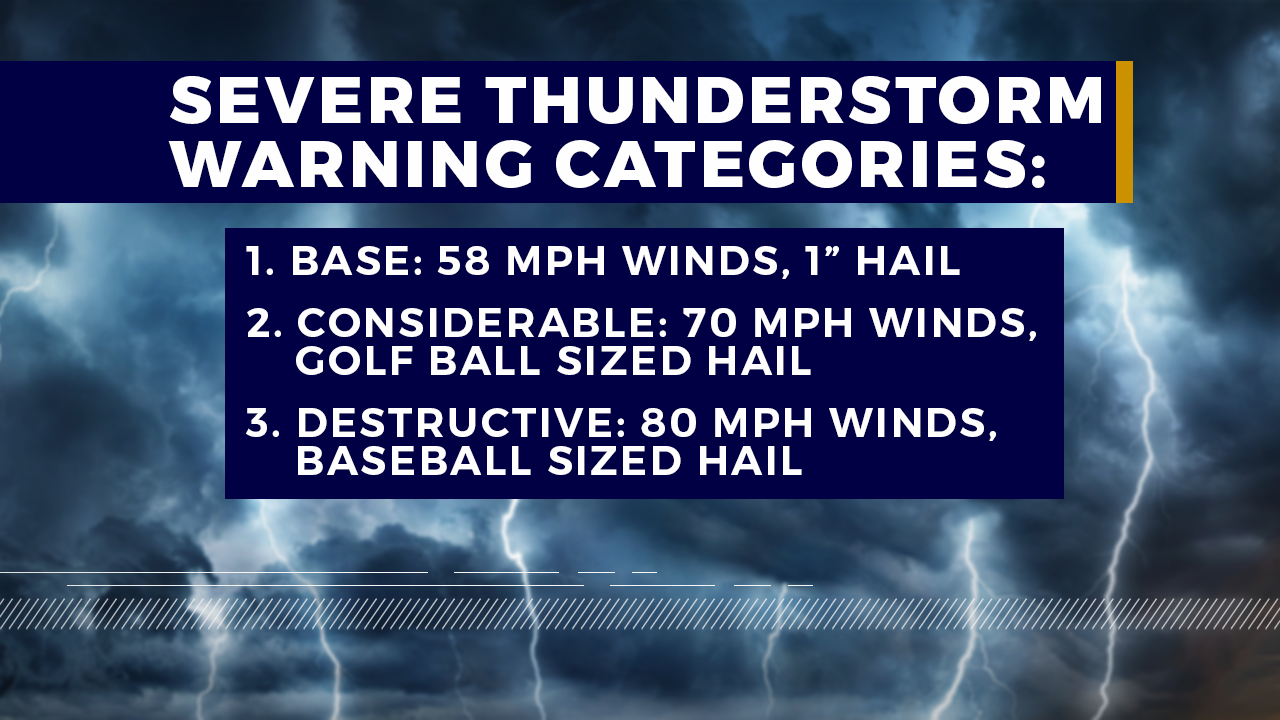May 23, 2024 – Understanding weather alerts is crucial for safety, especially when severe weather conditions are predicted. One such alert is a “severe thunderstorm warning.” Many people have heard this term, but what exactly does it mean? Let’s break it down in simple terms to help everyone stay informed and safe.
What is a Severe Thunderstorm Warning?
A severe thunderstorm warning is an alert issued by meteorological agencies, such as the National Weather Service (NWS) in the United States, to inform the public about imminent severe thunderstorms in their area. These warnings are based on real-time weather data, indicating that severe weather is either occurring or will occur soon.
Criteria for Issuing a Severe Thunderstorm Warning
For a thunderstorm to be classified as “severe,” it must meet specific criteria. The NWS defines a severe thunderstorm as one that produces at least one of the following:
- Hail: Hailstones with a diameter of 1 inch or larger.
- Wind Gusts: Wind speeds of 58 miles per hour (mph) or higher.
- Tornadoes: Although not always present, severe thunderstorms can produce tornadoes.
When these conditions are detected or imminent, a severe thunderstorm warning is issued.
How is a Severe Thunderstorm Warning Different from a Watch?
It’s essential to understand the difference between a “watch” and a “warning” when it comes to severe weather.
- Severe Thunderstorm Watch: This means that conditions are favorable for severe thunderstorms to develop. It is a heads-up to stay alert and be prepared for potential storms.
- Severe Thunderstorm Warning: This means that severe thunderstorms have been spotted or detected by radar. It indicates that the threat is immediate, and protective actions should be taken.
What to Do When a Severe Thunderstorm Warning is Issued
When a severe thunderstorm warning is issued, it is crucial to take it seriously and act quickly to protect yourself and your loved ones. Here are some steps to follow:
- Seek Shelter: Move indoors immediately. Avoid windows and glass doors. An interior room on the lowest floor of a building is the safest place.
- Stay Informed: Keep a battery-powered weather radio or a reliable weather app on your phone to receive updates. Power outages can occur, so having a backup information source is vital.
- Avoid Using Electrical Appliances: Lightning can travel through electrical systems. Avoid using wired electronics during a thunderstorm.
- Stay Away from Water: Do not bathe, shower, or use plumbing during a thunderstorm. Water can conduct electricity from lightning strikes.
- Unplug Appliances: If you have time before the storm hits, unplug appliances to protect them from power surges caused by lightning.
Impact of Severe Thunderstorms
Severe thunderstorms can have devastating impacts. Understanding these can help you appreciate the importance of taking warnings seriously.
- Property Damage: High winds and large hail can damage roofs, windows, vehicles, and crops. Falling trees and debris can cause additional harm.
- Power Outages: Storms can knock down power lines, leading to extended power outages. This can affect homes, businesses, and essential services.
- Injuries and Fatalities: Flying debris, collapsing structures, and lightning strikes can cause serious injuries or even death.
- Flash Flooding: Heavy rainfall associated with severe thunderstorms can lead to rapid flooding, especially in urban areas where drainage systems may be overwhelmed.
Recent Examples of Severe Thunderstorms
To illustrate the significance of severe thunderstorms, here are some recent examples:
- Dallas, Texas, March 2024: A severe thunderstorm brought large hail and wind gusts exceeding 70 mph. The storm caused widespread property damage and power outages affecting thousands of residents.
- Kansas City, Missouri, April 2024: A severe thunderstorm warning was issued as radar detected a storm capable of producing tornadoes. While the tornadoes did not materialize, the storm caused extensive wind damage and hail destruction.
Understanding Weather Terminology
Being familiar with weather terminology can enhance your ability to respond to severe weather alerts effectively. Here are a few terms often used in conjunction with severe thunderstorm warnings:
- Radar-Indicated: This means the warning is based on radar data showing severe weather conditions.
- Confirmed: This means that severe weather conditions have been observed by weather spotters or law enforcement.
- Mesocyclone: A rotating air mass within a thunderstorm that can lead to tornado development.
Staying Prepared
Preparation is key to minimizing the risks associated with severe thunderstorms. Here are some tips to stay ready:
- Create an Emergency Kit: Include items such as water, non-perishable food, flashlights, batteries, first-aid supplies, and essential medications.
- Develop a Family Plan: Ensure that all family members know what to do and where to go during severe weather. Practice drills can be helpful.
- Secure Outdoor Items: Before a storm hits, secure or bring inside items that can be blown away, such as patio furniture, umbrellas, and trash cans.
- Know Your Weather Alerts: Understand the different types of weather alerts and how to receive them, whether through apps, weather radios, or local news.
Conclusion
A severe thunderstorm warning is a critical alert that signifies immediate danger due to severe weather conditions. Understanding what it means, how it differs from a watch, and what actions to take can significantly enhance your safety. By staying informed and prepared, you can protect yourself and your loved ones from the potentially devastating effects of severe thunderstorms. Always take these warnings seriously and act promptly to ensure your safety.





